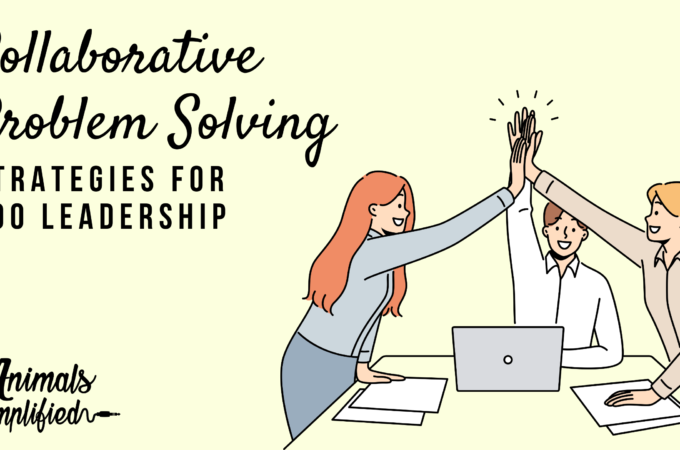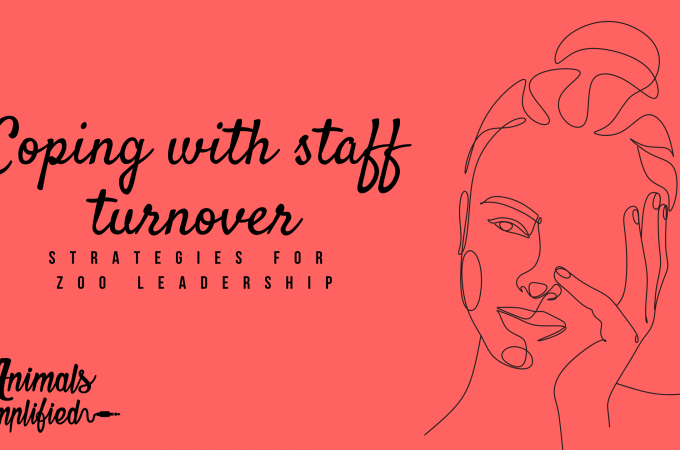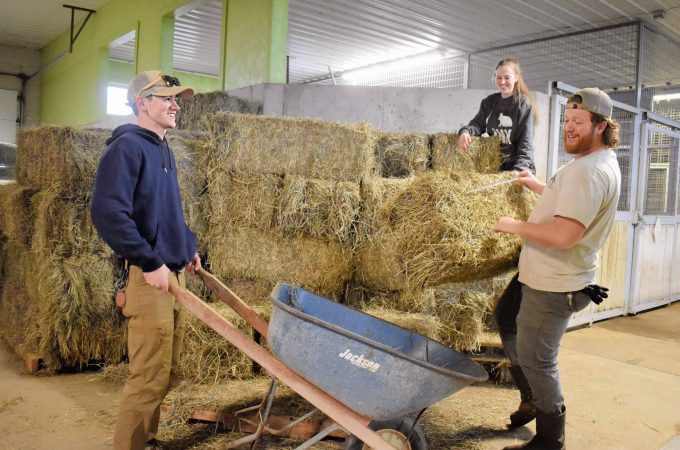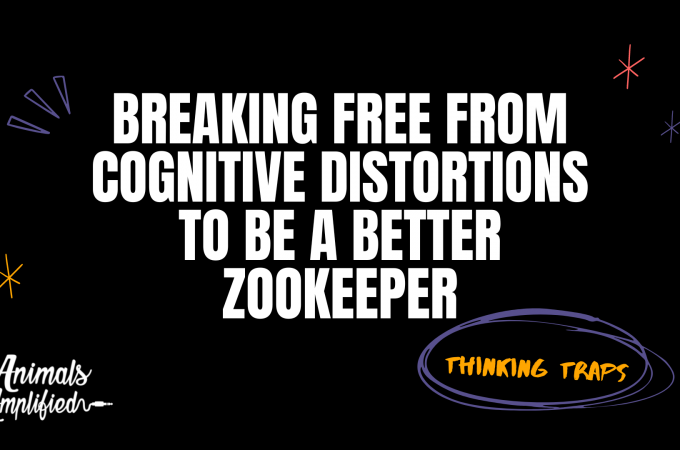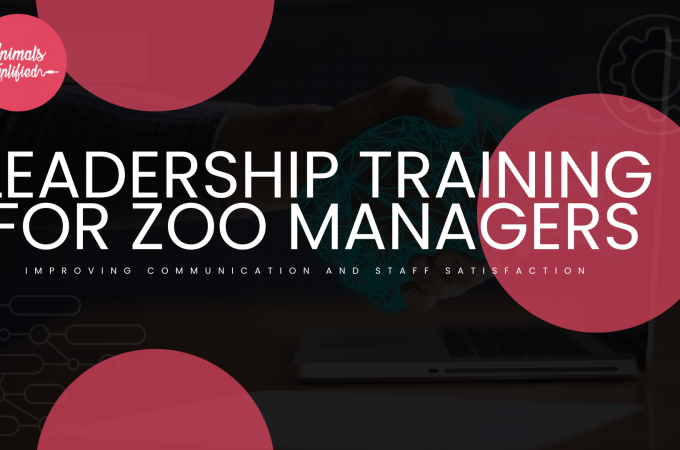
The Balancing Act of Management: Addressing Trust Issues and Miscommunication
In any workplace, trust, and communication are critical components for a healthy and productive environment. I would argue in the zoo industry, it’s even more vital. Zookeeper miscommunication can result in animal death, and since we’re all in this for the animals, trust, and miscommunication are things we need to address. Zoo leaders who struggle with these areas often deal with low morale, high turnover, and decreased productivity. In this blog, we will discuss the balancing act of management: addressing trust issues and miscommunication to create a positive work environment that promotes growth and success.
Addressing Trust Issues
Trust issues are a common problem in many workplaces. Often, employees feel that management is not transparent or accountable, leading to mistrust and disengagement. Various factors, including poor communication, micromanagement, and a lack of delegation, can cause this. Trust is crucial in any relationship, and it is essential in the zoo to build strong working relationships, create a positive work environment, and provide legendary animal care.
How do you know if you have trust issues?
There are three common “symptoms” of low-trust environments in the zoo industry. Sometimes it’s obvious, but many times the leaders responsible for these issues don’t notice. Why? Because they live in low-trust environments, these symptoms are more normal in their daily lives.
- Finding out about issues second hand. “Mary is looking for another job because she’s upset about how you handled the goat euthanasia.” Often leaders in low-trust environments have one or two trusted confidants. They get most of their information about the team and issues from these individuals.
- Avoiding communication. Another sign of trust issues is when your team doesn’t talk to you. When confronting one manager about their trust issues, they said, “Well, this is the first I’m hearing of this, so if it’s really that big of an issue, why didn’t they come to me about it.” If your employees don’t feel confident or comfortable raising concerns to you as a leader, that’s a “you” problem.
- High turnover and low retention. Turnover rates, on average, are about 47%. You can calculate your turnover by taking the number of employees who quit divided by the average number of employees per month times 100.
What can leaders do to address trust issues?
To build trust, zoo leaders need to be transparent and accountable. Being transparent means communicating openly and honestly with employees about issues that affect them, such as company policies, plans, and decisions. These communications should be more than just announcements. Zoo leaders should allow time for keepers to seek more information by asking questions.
It can be scary for people to ask questions. One powerful tool I’ve learned from leaders around me (that if you have ever met me, you will know I’m still working on) is silence. If you’re presenting information to your team and want them to ask questions or provide feedback. Present your information in the most concise way possible and then say, “I’ll let you think about what questions you have, and then I can answer them.” Sit down and let there be silence until the first question is asked.
Being accountable means taking responsibility for your actions and decisions. Managers should admit when they make mistakes, apologize when necessary, and work to make things right. This can help build trust with employees and show that management is invested in their success.
“I took a 360, and even though my highest score of “most frequent” behaviors was 9.1 and “least frequent” lowest score was 7.1, I am choosing to focus on not overdoing my “most frequent behaviors” such as “working to get things done quickly.” I am trying to be mindful that not everyone likes to work at warp speed…and that’s ok. Working on my behaviors so that we can all collaborate and work together with a common vision and future.”
– Trust building leader
Recently, in a meeting, a leader who works under me got animated and raw. This rubbed some of the team the wrong way, and they told her so. She apologized. The most beautiful thing about her apology was that it wasn’t followed by “but” she simply said. “I’m sorry I got so animated and upset you.” Apologizing more and not feeling the need to explain your behavior will build trust on your teams.
Zookeeper Miscommunication Erodes Cultures of Trust
When digging into the “people problems” at work, I almost always discover that missed expectations or misunderstandings are the root of the issue. Zookeeper miscommunication is a common issue, and the obvious fix is for keepers and leaders to improve communication, but that’s not so simple.
Communication is complex, and we bring a lot of baggage into our communication with others. Is the problem with what was said? What was not said? How it was said? Who it was said to? Who it wasn’t said to? Because it reminds me of my last boss? The list goes on. Sometimes when we hear that miscommunication is a big problem on our teams, we want to hide. It seems overwhelming to meet expectations. However finding and addressing trust issues involves digging in to communication problems.
In my consulting, we dig to find the root of zookeeper miscommunication, and I even teach a workshop on how to communicate better. One of my favorite tools for addressing zookeeper miscommunication is my Assume Best Intent Worksheet. Let’s talk it through.
Step one: Recognize –
After a miscommunication, one person probably feels emotions regarding the situation. It could be anger, confusion, frustration, despair, etc. The first step is to recognize what you are feeling. Try to identify where in your body you’re feeling that emotion. For me, anger is in my head, my eyes shake, and my face feels flush. Recognize what emotion you’re feeling and where.
Step two: Acknowledge –
This step is as simple as saying it aloud or writing it down. I feel ________, and I know it because ________. In my example, I feel angry, and I know it because my eyes shook and my face feels flushed.
Step three: Get curious –
What’s making you feel this way? You need to understand the story you’re telling yourself about the miscommunication. Try to understand what made you feel the way you are. I feel angry because my supervisor just announced that the zoo is launching a new training team, and now I can’t train any of my animals.
Reframing is the hardest. You need to step back and look at the situation away from your emotions. What are the facts? What were the behaviors you witnessed? What were the words that were said? Could you be telling yourself a story? My supervisor said, “We’re excited to announce the launch of a new training team. This team will be responsible for meet and greets, behind the scenes, and assist with husbandry training.” Maybe it’s not exactly what I imagined.
Step four: Reframe –
Take your new found perspective and reflection on the facts, and write a new story that isn’t negative. This reframe assumes there was a miscommunication or information you don’t have. For my example, maybe I jumped to conclusions that I can’t train any of my animals and never get to do meet and greets again.
Step five: Personal Accountability –
You take action regarding what you can control. See if you can ask yourself a question that starts with “How” or “What” and has the word “I” in it. For example, “How can I get more information to better understand this new team?” “What can I do to show I want to be on the training team?” “How can I work with the team to still get the opportunities I enjoy?”
Improving Communication in the Workplace
Communication is a critical component of effective management. When communication is poor, misunderstandings and miscommunication can occur, leading to confusion and conflict. To improve communication in the workplace, managers can deploy many different tactics that range from weekly updates and summaries, daily stand-up meetings, one-on-one’s, more frequent check-ins with your team, and simply listening.
Managers should also be good listeners. They should listen actively to what employees say, ask questions for clarification, and be thoughtful about their feedback. Active listening shows employees that management values their input and is willing to work with them to solve problems. It also helps is a great way to lead by example to help prevent zookeeper miscommunication. Addressing trust issues requires managers to get curious when they want to get furious and really work to understand their teams.
Share our Be A Better Keeper FREE course with your team to improve communication at your zoo.
Zookeeper Communication Strategies to Build Trust
In this section, we’ll talk about three zookeeper communication strategies that will help you with addressing trust issues. The three main enemies of building trust are micromanaging and criticizing. The cure to micromanaging is learning the art of delegation. Improving your coaching skills is like a magic pill for your inner critic. But one of the most powerful strategies is celebrating and appreciating your team. Let’s dive into the three tips.
Delegate Outcomes using clear roles and measurables
Finding the right balance between trust and control can be challenging for managers. On the one hand, employees need to trust that management has their and the animals’ best interests at heart. On the other hand, management needs to maintain control over the workplace to ensure that things run smoothly. To find the right balance, managers should delegate responsibilities to their employees. This shows that they trust their employees to get the job done and allows them to focus on other essential tasks.
When we delegate, we need to remember to delegate outcomes. This means sharing what the end goal looks like, any constraints to getting to the goal, and how both parties will know the job’s been done well. For example, if I tell my team they are responsible for revamping our kitchen protocols to make things more efficient. I will share what resources they have in labor and budget, when the project needs to be completed, and what winning looks like: i.e. completing diets in three hours with one person.
Empowerment is also important in building trust. Managers should give employees the tools they need to succeed, such as training, resources, and support. Then they can use their best zookeeper communication strategies to check in throughout the project and support as needed. This shows that management is invested in their success and helps build a sense of ownership and accountability.
Coaching and one-on-one’s
While trust is crucial, control is also important. Zoo leaders need to maintain control over the animals and policies to ensure that things run smoothly. They need to be able to step back and see the whole picture and bigger vision of the team. To do this successfully, you have to have time to think, and you have to have the information needed to make decisions.
The information gathering can be achieved through regular check-ins, clear communication, and setting expectations for performance. The best way to do this is through regular one-on-one’s. These are conversations with your team where you find out what’s been going well, and what’s not working, and check in on how they’re doing in their role and personal development.
In my one-on-one’s I review the five main responsibilities of the role and any measurables that tell me whether the team member is doing a good job. We also review our company core values and each rate the employee on if they display that core value most of the time, sometimes, or usually not. Then we review any of the goals we set for that 90 days. Are they on track or off-track? What can I do to help?
This allows us to have an open conversation about what’s working and what’s not. I also get to ask what support they need from me and how I can help them achieve. Most importantly, we get to celebrate progress, goal completion, and reinforce them in their role.
“Yes during my 1×1 meeting with my direct manager I usually have a list of things and so does she. So I have the opportunity to ask or discuss anything really and vice versa. She always takes notes during the meetings and forwards them to me by the end of that day. She is very easy to talk and repeats back my interests/concerns and often asks for further clarification. If any of our topis require discussion from higher up management, then she will take those to them and have responses for me by our next 1×1 or earlier.” – A zookeeper who feels heard
For more on one-on-one’s read this blog.
Celebrations and Appreciation
As humans we have a tendency to both look for the negative and look for information that confirms our thoughts and opinions. This often results in zoo leaders who focus on the 5% an employee is doing wrong and not the 95% they’re doing right. However, zookeepers are humans too, and they too tend to focus on the 5% their leaders are doing wrong.
To change that, we have to train ourselves to look for the good. At my facility, we open each meeting by each person sharing one good thing about their personal lives and one good thing about their professional lives. This helps us see each other as humans who have lives outside of work and also gets us to celebrate personal and professional wins.
Ideas for celebrating and building trust from the field:
“ Our keepers have a way of showing appreciation to one another by commending them out loud in front of the group and managers. We are usually given 5 minutes at the beginning of a department meeting to give each other nods of appreciation. For example, if a keeper unloaded someone else’s glider/bucket without being asked, they will get recognized in front of everyone for it. It’s pretty neat and supports team comradery.”
– Santa Barbara Zookeeper
“I’m also planning on having a compliment board put up to encourage positive thoughts, do a “fireside” chat where we highlight someone new each month and get to know them better in a setting where they can be asked questions by the staff in a rapid fire fashion (and still be mindful of how to best approach this for each individual).”
– ZooAmerica Manager
Addressing Trust Issues to Reduce Turnover
When zoo leaders can master addressing trust issues, it builds trust within their teams. Once trust is in place, issues and problems rise to the surface and are easy to tackle as a group. This takes the weight of leadership and reduces resentment at the team level. Burnout and resignations become a thing of the past, and we can build cultures truly focused on excellence in animal care.
To learn more about communication strategies for zookeepers, read our blog.

